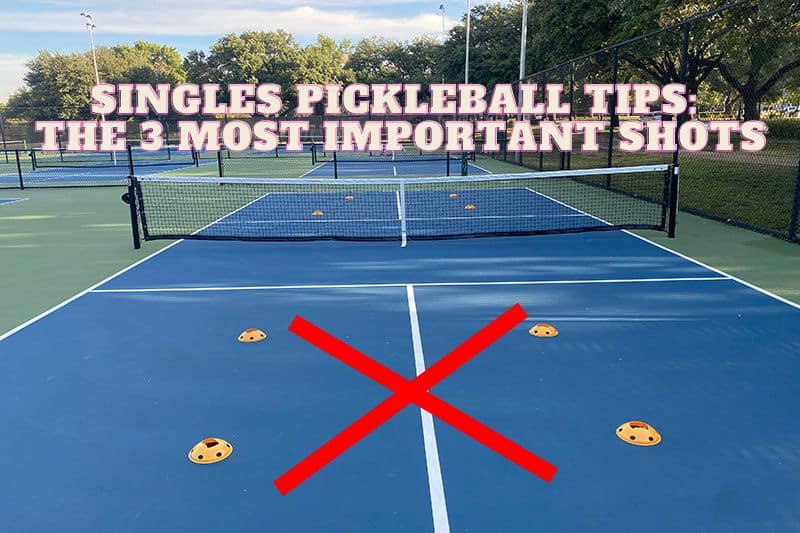
If you’re interested in playing pickleball singles, you may be surprised to find that it can be a whole different game than playing doubles. While all the rules and shots are the same, the reasoning behind singles pickleball tips and strategies are important to understand. So let’s break them down and go over the three most important shots in playing pickleball singles.
The 3 Most Important Shots For Pickleball Singles
The Serve
One of the most important singles pickleball tips that is not necessarily true for doubles is when it comes to the serve. In pickleball singles, you want to be aggressive when serving. An aggressive serve should have depth that makes the serve return more challenging.
You can mix up the pace by adding heavy topspin or not adding any pace at all. But it should be deep to make the serve return as short for you as possible. Why is that? Because the serve return will set up the third shot for you.
You want to have a high, short return that will allow you to move up. Or allow you to pass your opponent as they’re moving up. So with your serve, you want to give yourself the best chance for a third passing shot.
The Return
The return of serve is as important as the serve. How and where you return the serve will make a huge difference in how the point plays out. If you don’t return an aggressive shot, chances are, your opponent will be able to take advantage of it.
You also want to avoid returning the ball right in the middle where your opponent is waiting to rip their third shot. Imagine a no-go zone in the middle of the court that would not require your opponent to move, therefore making it easy for them to make their third shot.

Instead, you want to aim your return down the sidelines or at an angle toward the sidelines to force your opponent to make the run. That makes their third shot a lot harder when they’re having to lunge forward or sideways. You can then come up and block their third shot.
DISCLAIMER: If you’re playing at an advanced level where you’re playing against someone that’s great at angles, you want to aim right at the middle of the court. Why? So you don’t give them any more angles to work with. By returning the ball in the middle, you’re cutting the angles off.
The Third Shot
Your third shot will determine whether you should move up the net or look for a better ball. Ideally, you want to pass your opponent by allowing them to come up the net and then aiming your ball to hit behind them where they cannot block it.
If you’re not able to pass your opponent and they’ve already reached the net, you may not be able to come up just yet. Instead, look for opportunities for them to create a bad fourth or sixth shot. That is either driving toward their backhand where they will have to block it with a volley. Or dropping it to their backhand and then shadowing the ball as you move up.
Shadowing the ball means following the path of the ball. So if you’re standing on the left side of the court and you’ve hit the ball to your right, you will move up in the same pattern that the ball moved. If you’re not able to move up the court and your opponent is standing at the net, you still have a chance.
Look for angles and aim at each corner of their kitchen. Your third shot also does not necessarily have to be a passing shot. It can be a drop as it is in doubles. Or even a lob that will force them to move back toward the baseline.
But the concept of “make them hit one more shot” is even more important in singles pickleball tips than in doubles. Because even if you’re not able to put away the ball right away, more hits mean more pressure for the next shot, therefore more chances for errors.
More Pickleball Tips
Not much of a pickleball singles player? Playing doubles can be just as fun!
Read Next: Pickleball Rules For Doubles Explained
Read Also: USA Pickleball Official Rulebook

